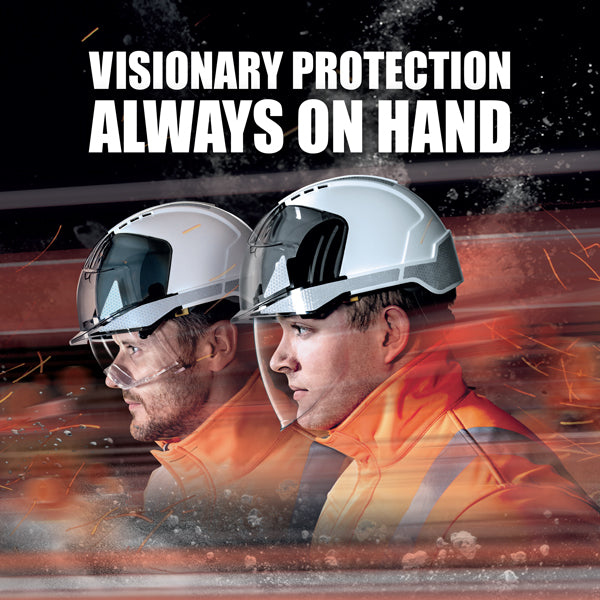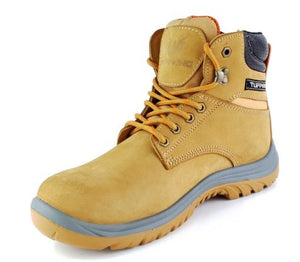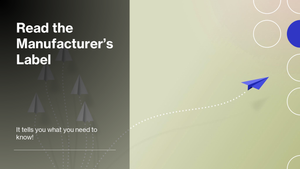Eyewear and Head Protection the JSP Way

PPE is effectively anything that can be worn that will protect you against any hazardous conditions. PPE is important because it reduces the impact of any health and safety risks and gives you extra protection in the event of an accident or against the elements.
The important thing with regards to PPE is that each and every situation you find yourself in when starting a job, is, first and foremost, to assess the risk factors to your/your colleagues safety in order to complete the task. Then, to dress accordingly in the correct PPE. Being wise after the event is too late.
Head Protection
Head protection is particularly important, when you consider what it protects - facial features (eyes, ears, etc) and the scalp and brain.
JSP Ltd is a long established, industry leading, British manufacturer, of highly innovative 'above the neck' Personal Protective Equipment.
The safety helmets, of JSP Ltd, include from their EVO® range: EVO®3, EVO®VISTAlens and EVO®VISTAshield.
The EVO®VISTA available with either lens or shield eye protection, incorporating a fully retractable, integrated overspec, designed to prevent debris travelling under the eyewear towards the scalp.
The EVO®3 safety helmet with wheel ratchet head adjustment, comes without either lens or shield eye protection.
JSP® helmets and goggles fully conform to the EN397 Standard and, in addition JSP® operate a BSI Kitemark™ scheme, the platinum standard for product quality providing a guarantee that every product that JSP® manufactures is from a batch that has been controlled and tested to ensure it passes the relevant standard.

But what does the EN397standard on the JSP® helmets actually give you?
EN 397 Requirements
EN 397 is the European Standard that specifies physical and performance requirements (including testing) for industrial safety helmets. It comprises the following mandatory tests:
Mandatory Tests:
- Shock Absorption Test – the 5kg rounded striker is dropped on the crown of the helmet from 1m. The force transmitted to the head form cannot exceed 5000N (5KN).
- Resistance to Penetration Test – 3kg pointed striker dropped on the crown region, striker not allowed to contact the head form.
- Resistance to Flame Test – when exposed to a flame for 10 seconds and then removed, the shell must not set alight or self-extinguish within 5 seconds.
- Markings – Every helmet which complies to the standard must have the following information moulded or impressed into the shell somewhere visible:
- Number of the European Standard (in this case EN 397)
- Name or identification mark of the manufacturer
- Year & quarter of manufacture (date stamp)
- Type of helmet (manufacturers designation): this should be marked on both the shell & harness
- Size or size range (in cm), marked on both the helmet & harness
- Shell material in abbreviated format.
In addition to the mandatory tests required, the following 'optional ' tests within the EN397 Standard can be applied and are with the JSP® helmets.
Optional Tests:
- Molten metal - Molten metal (heated to 1400°C) is poured on to the helmet, the helmet must not be penetrated by more than 10mm, and any flames must self-extinguish within 5 seconds.
- Lateral Deformation - When exposed to steadily increasing compressive force of 430N the helmets deformation must be no more than 40mm.
- Electrical Insulation - 3 individual tests are performed and a maximum leakage current of 1.2 milliamps is allowed. This optional test ensures reliable protection against electric shock up to AC 1000V or DC 1500V. Helmets that are conductive or have vents cannot pass these tests.
K & N Ratings
The European Standard tests the scratch resistance on the outside surface of the integral lens/ goggles (K Rating) on the helmet and the fogging resistance on the inside surface of the lens/ goggles (N Rating). Once again, the JSP® safety helmets fully meet these rating test requirements.
Safety Eyewear
If you are just looking for safety eyewear, or in combination with a safety helmet without integrated eye protection, the JSP Stealth 9000 is the one to have (see below). These 'wrap-around' safety glasses, with clear lens, give excellent eye protection from ultraviolet rays as well as debris incursion.
They also conform fully to the regulatory Standard, EN166.

Stealth™ 9000 Safety glasses with PremierShield™
EN 166 is the core technical industrial safety norm in Europe for eye protection applying to all types of individual protection of the eye which protects from hazards likely to damage the eye, except for nuclear radiation, x-rays, laser emissions and infrared emitted by low temperature sources.
To comply with EN166, eyewear must be tested to pass appropriate standards, the processes of which are outlined in EN167 Optical testing and EN168 Non-Optical testing
- EN 167 Optical Testing
- These tests incorporate field of vision, transmission and diffusion and refractive properties, which includes having:
- Sufficient light to the users' eyes
- Unrestricted field of vision
- UV light protection
- EN 168 Non-optical Testing
- These tests incorporate robustness and resistance to heat, ignition and corrosion.
- Robustness tests include dropping a steel ball onto the eyewear where the lens must remain in the frame and not shatter and the frame must remain intact.
- Heat test where molten metal might be involved, a 6mm ball bearing is heated to 900ºC is applied to the lens to test how long it takes to pass through the material.
- Ignition test involves heating a 6mm dia. x 300mm steel rod to 650ºC and pressing it against the eyewear. If it does not ignite or glow, the test is passed.
- Frame strength test involves the arms and frame being flexed for 500 cycles (40 per minute). To pass this test, the products must have no fractures or permanent damage.
As you can see from the above, conforming to PPE Standards involves research and development, possibly costly and lengthy, by the manufacturer, just to achieve it. Only then, can it be produced to the quality levels required!
The importance of having the correct PPE cannot be stressed too highly, it can, literally save lives or serious injuries. Please ensure you have the equipment right for you!
- Cardno Sales Team






